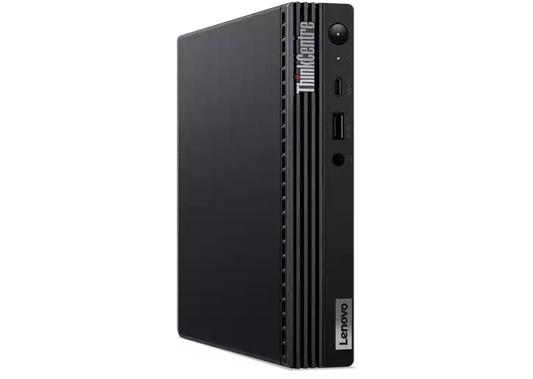What to Look For in USB Cables and Chargers
Everyone looks for efficiency when it comes to selecting a charger, and USB cables that connect are part of the equation. Many people also look for bargains when it comes to this selection, but you also have to keep in mind the potential damage that could be done to a phone when using the wrong cable or charger.
There are many other aspects to keep in mind when searching for USB cables and chargers. If you want to gain knowledge of what to look for when choosing USB cables and chargers, keep reading on.
First, Know Your Device And USBs
Before you consider what you need in a USB cable, you need to know the device it’s going to be used for. What USB port do your device and charger have? Familiarize yourself with this important information before going more in-depth as to which USB cables or chargers to use.
You may also be curious as to what USB stands for if not too familiar with the tech world. Well, now you will easily be able to weave your knowledge into conversations with friends by telling them that USB stands for Universal Serial Bus. A bus in computer lingo is a system that transfers data between components within a computer or between multiple computers. It’s incredible how much information can be stored and connected to USBs!
What Specifications and Terms Should You Look for?
Once you know what your device needs, you can consider what to look for that will optimize its performance. You want a charger that will not only be adequate but something that will help your phone maintain its battery life over time.
USB-IF
The USB-IF is a nonprofit organization that ensures top quality in all USBs that customers purchase. If a USB is certified by this organization’s Certified USB Charger Compliance and Logo Program, you can be certain this item is of top quality. You can check to see if a third-party USB is certified by checking for the USB-IF logo.
Wattage
You’ll have an idea of how fast your device will charge when you know the wattage of a USB. Keep in mind that you need to match the specs of your cable and charger for everything to run smoothly. USB-A 3.0 will provide a solid 4.5 watts, and many computers’ USB ports are at about 2.5 watts.
Also, Know What Your Voltage Is
Voltage is standard through different USB ports, but some may split the voltage across different ports. You should also know what your optimum current is because different devices have different currents. Voltage and current both impact the speed at which a device charges.
USB-A vs USB-C
For many years, the only USB on the market was USB-A. It stood alone, unchallenged, until USB-C came along and changed things. So what are the key differences between these two?
The Basics of USB-A
As mentioned, USB-A was initially the only one available. There are plenty of USB-A ports on computers, chargers, and plenty of other devices out there. It’s the basic, though still infinitely complex, port that lets a host and receptor device connect.
USB-A is incredibly reliable and it’s already installed into most devices since it’s been the go-to, and only, USB for so long. Though, there’s a reason why the USB-A has been updated with the new USB-C.
The USB-A has to be perfectly aligned to devices for it to fit, and sometimes it can be difficult to achieve this. Some very demanding applications need more power than USB-A can provide. That’s where USB-C swoops in to take over.
The Basics of USB-C
While technical standards of the high-performing USB-C were developed in 2014, this powerhouse didn’t make concrete strides until the late 2010s. First off, the USB-C is easier to connect to devices thanks to it being smaller, symmetrical, and more rounded than the classic USB-A
Some other benefits brought by USB-C include the possibility of different modes of compatibility with other connectors such as HDMI ports, speedier transfer of data capacity, and much higher power capacity.
While USB-C is newer than USB-A, it is already making a big impact on the market. It is backed by big companies specializing in tech such as Microsoft, Dell, Apple, and many other tech giants. And USB-C’s journey is far from over. It’s still constantly evolving as evidenced by the high speed of USB 3.1 and 3.2 implemented in USB-C.
The comparison of USB-A and USB-C shows that while USB-C has more power, USB-A has longevity and accessibility. USB-A is cheaper than USB-C, therefore it’s more easily accessed by a wide range of audiences. For a little extra power, you can also use the USB-A with 3.0 capability. Though if you’re using something that requires even more power, you may have to invest in a USB-C cable.
Compatibility
Compatibility is the primary consideration in choosing the right USB cables and chargers for your devices. Consider this for each aspect mentioned above. Don’t purchase a USB that only works with your phone but not with your charger.
There are also USB-A to USB-C cables, USB-C to USB-C cables, and USB-A to USB-A cables that will let you easily connect devices that have either the same or different types.
Overview of USB Cables And Chargers
As you can see, there are many considerations to take when choosing the right USB cable and chargers. From knowing it has good quality through certifications like USB-IF to ensuring that it’s compatible with your device, there are various aspects to these useful tech items.
Prices vary for USB cables ranging from as cheap as a dollar to more than five hundred dollars. While you will get what you pay for, you certainly don’t need to pay upwards of one hundred dollars for a quality USB cable. Simply look for the USB-IF certification on one that isn’t too pricey.
Now, when you embark on the journey to purchase a USB cable or charger, you will know everything necessary to make an informed purchase.



